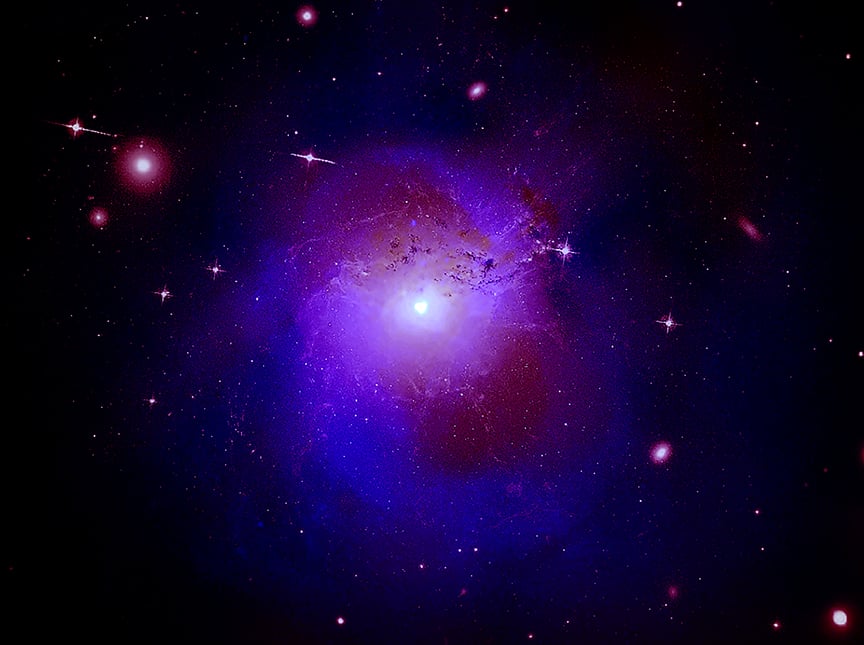The Cosmos with the Perseus galaxy & Dark Matter
An innovative interpretation of X-ray data from a galaxy cluster could help scientists understand the nature of dark matter, as described in our latest press release. The finding involves a new explanation for a set of results made with NASA’s Chandra X-ray Observatory, ESA’s XMM-Newton and Hitomi, a Japanese-led X-ray telescope. If confirmed with future observations, this may represent a major step forward in understanding the nature of the mysterious, invisible substance that makes up about 85% of matter in the Universe.
The image shown here contains X-ray data from Chandra (blue) of the Perseus galaxy cluster, which has been combined with optical data from the Hubble Space Telescope (pink) and radio emission from the Very Large Array (red). In 2014, researchers detected an unusual spike of intensity, known as an emission line, at a specific wavelength of X-rays (3.5 keV) in the hot gas within the central region of the Perseus cluster. They also reported the presence of this same emission line in a study of 73 other galaxy clusters.
